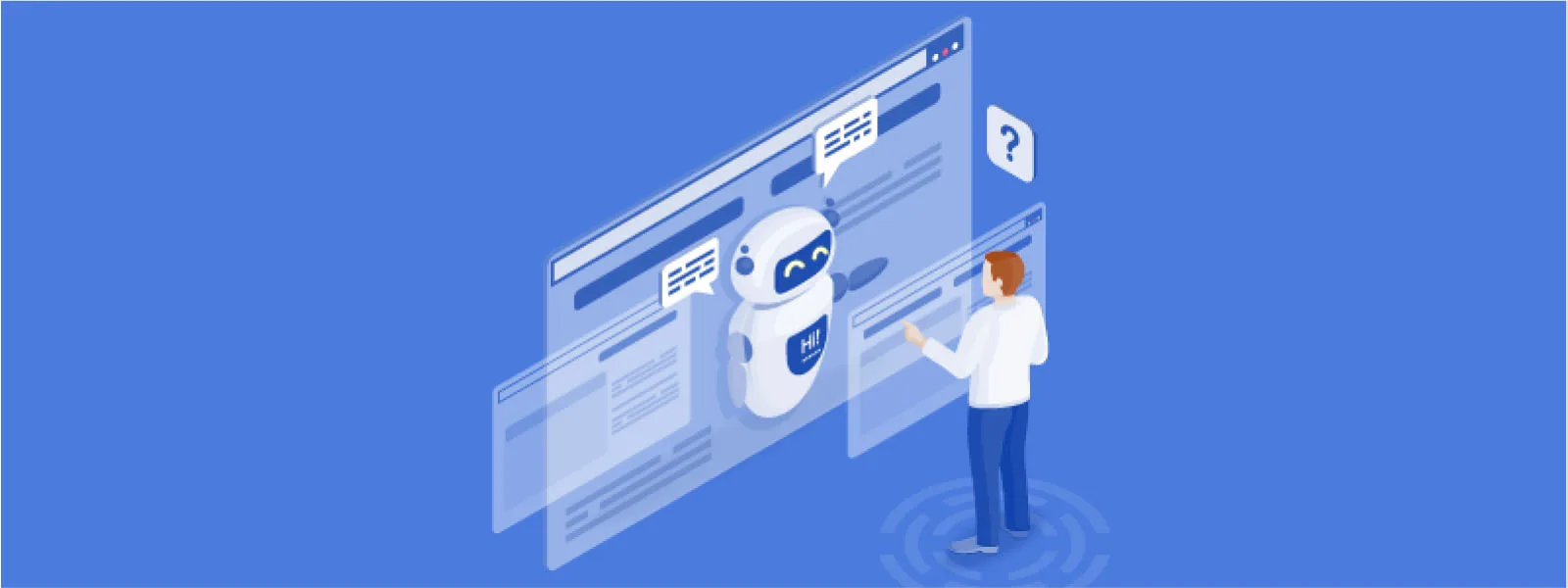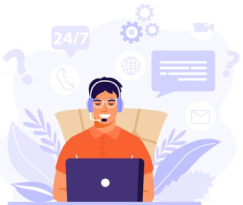REVE Chat Version 4.0
Version 4.0
Upgrade your website to an IM platform & beyond
Blending the strengths of IM and Live Chat
Upgrade your website to an instant messaging platform and beyond


Effective communication and a great conversational experience are at the forefront when it comes to chatbot design. Chatbots are the technological bridges between businesses and consumers to provide faster and improved online experiences.
According to the research conducted by Grand view global chatbot market size will be $1.25 billion by 2025. With an enhanced focus on customer engagement, chatbots in the form of a conversational interface (UI/UX) will be adopted by a huge number of businesses.
While building the chatbot user interface (UI), always remember who your end-user is. They are your customers and the fact that can’t be denied is – customers are judgmental. They have different motivations and look for emotional bonding everywhere, hence creating a first unforgettable impression becomes crucial.
This is how chatbot design gains importance and you should not ignore the key aspect – make it as human as possible. You have to be customer-centric while building your chatbot UX design. So, that the impressive UI/UX positively impacts your business and customer relationships.
A good chatbot design has a deeper impact on different business functions such as:
Though bots are powerful customer engagement channels, many users say that chatbots fail to resolve their issues and they rather speak to a human than a bot to answer questions.
Fair enough, but maybe this perception can be improved.
We are sharing tips & tricks on how you can design a chatbot that meets the expectations of your company and customers.
Connecting with your customers is the most important thing for any business.
And the first question to ask yourself is “Who is your ideal prospect?” Who are the customers you’re trying to reach and market your products?
Understanding customer personas, also known as ‘buyer personas‘ or ‘buyer personalities‘, is very crucial and the first step in building a chatbot. Knowing the overall personality of your customers, where they live, their age, their interests, likes/dislikes, makes the process easier and relevant. When you know all this information, it helps to define your target audience.
Knowing your target customers can help you in designing your chatbot by:
A very important question arises here – Why do you need a bot?
One of the crucial aspects of chatbot design is the end goal of building the bot. The actual purpose is what you will have to design your chatbot around. You have to be sure of your purpose for creating a bot because:
KLM Airlines created a Facebook Messenger chatbot to help users book tickets initially. Over time, they expanded the bot’s purpose “to guide customers through everything they need to bring to the destination.”
The KLM bot now helps users with all their travel needs, including arranging for visas and sending reminders.
If you go deeper to understand, the objectives can be classified into two things:
Every business has a unique set of requirements. It is very important to identify the type of chatbots to be used to engage customers effectively. For that, you have to understand how a chatbot works.
There are two main types of chatbots: rule-based chatbots and AI chatbots.
Rule based chatbots – They are also known as command-based or scripted bots. These bots rely on predefined paths, scripts, and dialogues during conversations. At each step during the conversation, the user will need to pick from explicit options that determine the next step in the conversation.
Conversational AI chatbots – These are commonly known as virtual or digital assistants. AI bots use NLP technology to determine the chatbot intents in singular interactions. With conversational communication skills, these bots converse with humans to deliver what customers are looking for.
Have you ever thought about how can you personalize the conversations between the bot and users to be more life-like, personal, and representative of human interaction?
By giving your bot a distinct personality.
Building a rich personality makes your chatbot more believable, and relevant to your users. Investing in personality informs every touchpoint of a chatbot. Personality creates a deeper understanding of the bot’s end objective, and how it will communicate through a choice of language, tone, and style.
One of the biggest challenges in chatbot UX design is identifying all the tasks and how the chatbot will guide the users in all those scenarios. During the conversation, your chatbot features should be capable of engaging visitors with quick answers and solutions.
You can convert the scenarios into small steps known as a node with the help of different actions to build the bot flow. The actions could be:
Each node is for specific actions and the small actions are interconnected with the other. You can make your chatbot flow as conversational as possible to enhance your customer experience.
How can you make your chatbot flow better or as conversational as possible?
Live chat and chatbot are two great communication channels for real time engagement with customers. By understanding the pros and cons of chatbots and live chat will provide better insights on which is the ideal fit for your business.
It is recommended that businesses should combine both channels to deliver a higher level of customer experience.
The business functions can be balanced by using both platforms to deliver automated conversational support to customers. Businesses whose priority is instant response and 24×7 availability can use chatbots as the first point of interaction to answer FAQs.
The conversations that are complex and need additional support can be directed to the live chat agents.
One of the crucial steps after you designing the chatbot is to know-how is the bot’s performance? Are your customers happy with the chatbot experience or not? In order to know the answers, you need to measure them.
Measuring the chatbot KPIs helps to understand the overall user experience with the chatbot was good or not.
While evaluating your chatbot experiences you, need to check on the below areas:
Defining the fallback scenarios is an important part of designing chatbots. When users interact with your bot with a random request they expect a response. If your bot is not capable of fulfilling the user requests, it is not an ideal fit for those scenarios.
When a user interacts with the bot and the bot fails to understand the scenario, it can possibly respond in the following ways:
When the fallback scenarios are well defined, there are fewer chances that users might leave confused. Rather it helps to end conversations on a positive note.
When we buy a product, we don’t just use the product but experience it. Every time we interact with a particular product, we put emotions into that experience. No matter if it is positive or negative, we always have feedback about the experience.
But what actually makes a product or service unforgettable?
An attractive product or service. Humor tends to have a positive effect on how humans perceive conversations.
Pro tip – Adding visuals cleverly can be a great way to impress your visitors.
Choosing the right platform for designing your chatbot is very important. It purely depends on your business requirements. You can choose one of the two ways to build chatbots. They are:
The ready to use bot platforms are kind of a blessing for businesses as it saves effort and time. Here are the criteria to select a bot platform.
It is recommended to build a customized bot development only if your business requirements are unique or have complex use cases. In such scenarios, it is highly likely that the ready-to-use bot platforms may not be able to deliver the specific solution that your business needs.
Designing a chatbot is a mix of both art and science. The art is to understand your target customers and their needs and the science is to convert those insights into small steps to deliver a frictionless customer experience.
By going through the above principles of chatbot design you can haul your customers by engaging them interactively. Thus, with a great chatbot design, you can enhance the overall customer experience and build strong business-customer relationships.
Start a 14-day free trial, no credit card required
Stay updated with the latest trends and ideas we share
What happens when your business doesn’t have a well-defined lead management process in place? You might then struggle to track,...
In your business, you need information about your customers’ pain points, preferences, requirements, and most importantly their feedback. Now think this...
How does the future look like to you with Artificial Intelligence shaping most of our day-to-day tasks? Sometimes it feels...



